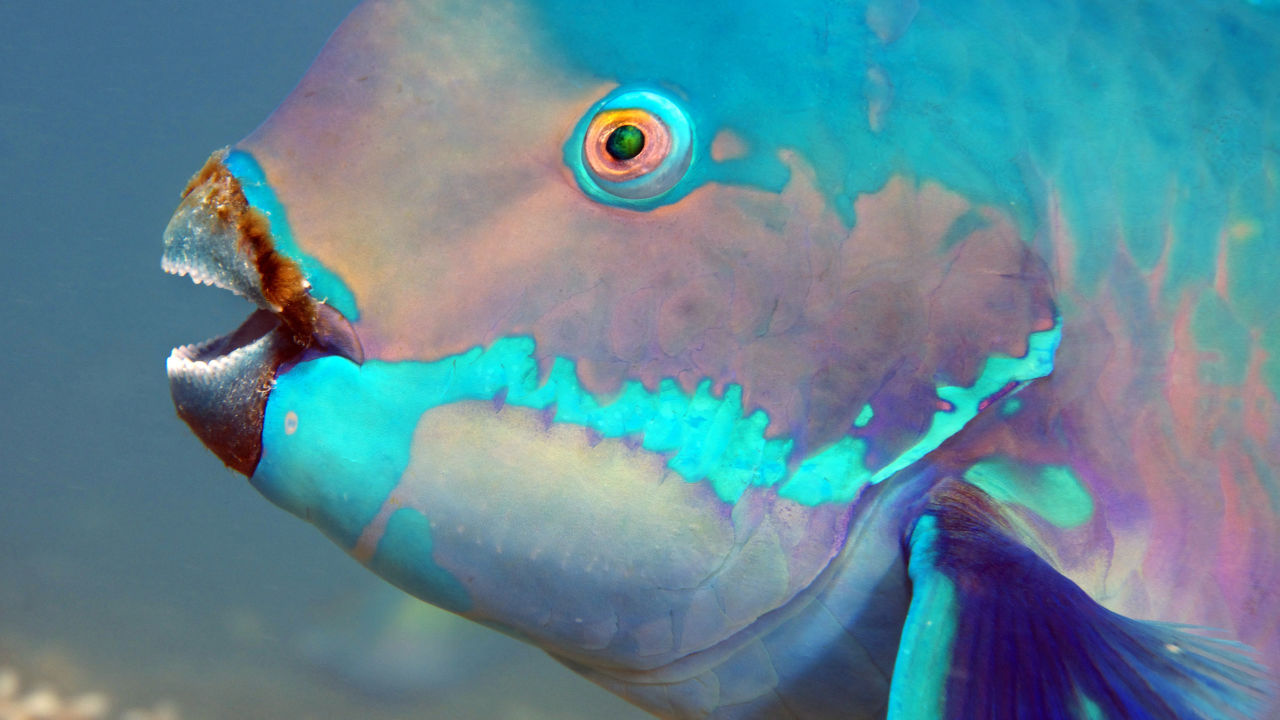Hello ladies and gents this is the Viking telling you that today we are talking about
THE PARROT FISH
Parrotfish are close relatives of the wrasse, with more than 30 types living on our Reef, often forming large mixed schools with other species. While divers might struggle to spot a tiny cleaner wrasse, they’re unlikely to miss their bigger, brighter cousins. Some species of parrotfish can reach up to 1.2m in length.
Parrotfish play a complex role in our important coral reef ecosystems. Their diet consists mainly of algae, which grows inside coral polyps. In order to reach the algae, parrotfish rip small chunks of coral from the Reef and use the teeth in their throat to grind it up.
This led to a widespread belief that Parrotfish are damaging for coral reefs, but recent studies suggest they may play a role in helping bleached coral recover by eating the algae that prevents new coral growth.
Here are five more fascinating facts about these unique creatures:
1. Parrotfish build sleeping bags made of mucus
Before they go to sleep each night, some species of parrotfish build a transparent cocoon made of mucus secreted from special glands in their gills. It not only keeps them safe from biting “bed bugs” like parasitic isopods that attach while the fish sleep, but may also mask their smell from night-time predators like moray eels and sharks.
2. Parrotfish are prolific eaters – and excreters
Using their powerful beaks, parrotfish can munch on coral at an astonishing rate of 20 bites per minute. And what goes in must come out. If you swim behind a feeding parrotfish, you might spot a plume of fine sand coming out the back end – the digested remnants of a coral’s stony skeleton. Scientists think parrotfish faeces contribute to much of the coral sand found on our reefs and even help to form reef islands. It’s estimated a single parrotfish could produce up to 90 kilograms of sand each year.
3. Parrotfish teeth are harder than many metals
Diving on the Great Barrier Reef provides not only a kaleidoscope of sights and colours, but sounds too. Listen out underwater and you might just hear the distinctive crunch of some types of parrotfish as they chew on coral. It’s thought they’re after the algae that grow on corals, and research suggests they’re also eating the bacteria and microbes that live inside coral. Either way, it takes tough teeth to take on a stony calcium-carbonate diet. Their incredible teeth are fused as one to their jawbone. The crystalline structure of their teeth is so sturdy, it would beat gold, copper and silver in a fracture test.
4. Parrotfish are gender fluid colour changers
Parrotfish change their sex throughout their lives, swapping from female to male as they grow. One big brightly coloured male will defend a harem of smaller, duller females and supply all the sperm needed to fertilise their eggs. But as they grow bigger, females will often change sex and then challenge other males to lead the group. It’s a process known as “protogynous hermaphroditism” and each time they do it, their colour changes drastically too.
5. Parrotfish woo with dancing under the full moon
By the light of a full moon, hundreds of bumphead parrotfish aggregate en-masse in a process known as “lek mating”. Males will bash their head together to defend their territories and then put on shows as females parade by. Together, they will spawn their eggs and sperm into the water and fertilisation can take place.
And as always have a chilled day from the Viking

Comments
Post a Comment